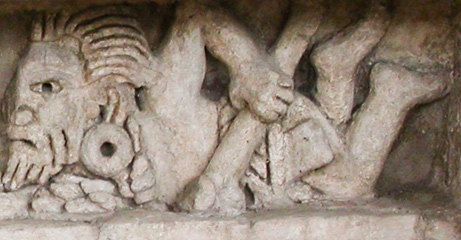Femur is the power symbol of the ancient Zapotec?
For the ancient Zapotecs, the ancestor's femur was carried as an expression of power.
Based on hundreds of year-old stone carvings in southern Mexico, archaeologists have long argued that Zapotecs carry femoral bones to show power.
'We think that females belong to the ancestors of the ruling class, like a scepter representing status or a symbol of the law,' said archaeologist Gary Feinman of the Museum. Field in Chicago said.
Now tomb excavations within a study have confirmed the idea. Moreover, it also revealed that it seems that even ordinary people carry their ancestors' femur.
Zapotec civilization exists in tandem with the two ancient civilizations, Maya and Aztec, and reached a period of prosperity from 500 BC to 1000 AD in the present-day Mexican valley of Oaxaca.
Previous excavations discovered a Zapotec grave with 9 females disappearing. However, these 9 skeletons are in a rather messy state, so it is not sure if lost thighs are taken away by humans or just because of a natural loss.
Proven hypothesis
Zapotec people often bury relatives close to home - sometimes even indoors.
In an excavation earlier this year at a fortress near the old city of San Pablo Villa de Mitla, Feinman and his colleagues discovered a brick pit with a brick wall beneath a house.
 (Photo: Linda Nicholas)
(Photo: Linda Nicholas)
Inside was the skeleton of an adult man who was almost intact, except the right thigh bone had disappeared.
'This is a great finding - it confirms what people have speculated before,' said archaeologist Javier Urcid from Brandei University, a person who did not participate in the excavation team.
The populist power symbol?
There are signs that the crypt was built around 500 AD, and was dug up after the first burial of 25 to 100 years. Because this house was used continuously throughout the period. Therefore, the grave digger must have relatives with people in the grave, the researchers deduced.
'I believe that taking the ancestors' femur was the way Zapotec's asserted its' line-to-line' status, ' said archaeologist Joyce Marcus of the University of Michigan. Marcus was also not involved in the team's excavation.
'It seems that every eldest son carries his father's thigh bone. This represents a solid continuation of the lineage from ancestors to descendants. '
The newly excavated grave is very simple, with little burial clothes - this shows that the man in it is not of aristocratic lineage even though he may be the head of a family, the family, Feinman to speak.
'Here comes a question: is the thigh bone more widely used as a dominant symbol of power holders, albeit less or less?'
- Decode the most classic symbols of the ancient world
- The oldest DNA decoding of people 400,000 years ago
- Half-toned femur revealed a prehistoric 'super monster'
- Why is the power button of electronic devices all this symbol?
- Mystery of ancient Egyptian symbols
- Mysterious fascist symbols in the German forest
- Video: The unexpected truth about the origin of the heart-shaped symbol
- Video: Do you understand the symbol No.2?
- Interesting maps of the world around us
- The origin of the $ symbol
- Why did the ancient Egyptians worship lotus images?
- 7 symbols everyone knows their origin, few have heard of it
 Discovered an ancient centipede fossil 99 million years old
Discovered an ancient centipede fossil 99 million years old Discovered bat-like dinosaurs in China
Discovered bat-like dinosaurs in China Discovered a 200-year-old bronze cannon of the coast
Discovered a 200-year-old bronze cannon of the coast Discover 305 million-year-old spider fossils
Discover 305 million-year-old spider fossils Top 7 strange psychological effects of the brain that we all have without knowing
Top 7 strange psychological effects of the brain that we all have without knowing  We could start building a colony on Mars with just 22 people!
We could start building a colony on Mars with just 22 people!  CNN reveals a food that is a 'miracle drug' that helps people live to be 100 years old, and that Vietnamese people have been using for a long time.
CNN reveals a food that is a 'miracle drug' that helps people live to be 100 years old, and that Vietnamese people have been using for a long time.  Why are 76% of rich people introverts?
Why are 76% of rich people introverts?  13 extremely popular questions about the world that everyone is confident they know everything about, but are actually completely wrong.
13 extremely popular questions about the world that everyone is confident they know everything about, but are actually completely wrong.  Extremely interesting facts about the legend of bo bo during the subsidy period
Extremely interesting facts about the legend of bo bo during the subsidy period 